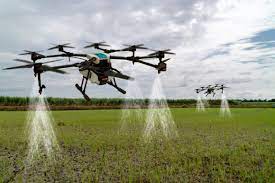Use of Drones in the Railroad Industry
Railroads are among the networks that joins the country’s different parts together. When natural disasters occur, railroads can be at risk. This may happen due to storms, earthquakes or due to the floods that engulf railroads altogether. In such situations, it becomes impossible to figure out which part of the railroad is actually broken and which is just stranded due to the recent natural disaster. Due to the challenges faced by railroad officials in charge of determining the damages and getting it repaired, drones are now finding their way into the railroad industry. Drones are capable of reaching distances of up to 30 miles, compared to the 10-15 miles that humans are capable of reaching. This also makes them capable of monitoring the railroads much faster and efficiently.
Drones are capable of carrying out tasks that would be impossible to do on land. Drones can be used within a few hours compared to weeks it would take human workers to do the same job. One of the drones that the railroad industry is using for the job is called the Palapooter. The job of carrying and delivering supplies and equipment on the railroad is about 60% easier with the use of drones. The payload capacity of a drone is about 3500 pounds, compared to the 5000 pounds capacity of a freight train. And getting the drone back on its wheels can take place in about 40 minutes compared to the 1-2 hours it would take human workers to do the same task.
Drones can be used to keep an eye on the railroad industry too. They can record the inspection work done by rail employees and they can act as a reserve force that will help in case of an emergency. Drones are capable of reaching heights that no human being can go and they can take close pictures of the work that’s being done on the railroad.
In addition to inspection work, drones can be used to do other valuable tasks that help railroad companies to maintain a better quality of work and ensure a continuous flow of business. Drones can be used to record the work that’s done on the railroad and they can act as a past memory for the workers who work on the railroad. The drones remain below the clouds so that they can give an illusion of how the work is being done, pictures and videos of the work done on the railroad can be shot for future analysis.
… but not this time
Even though drones are a near future piece of technology, examinations have yet to be made of the risks they pose. The chance that drones will become a part of the railroad industry is still a possibility, but it won’t be a reality this time around. However, if this were to happen, it would be easier to explain. With a new order of freight trains, the ability to also inspect the load would be possible. If this were to happen, it would be much simpler to explain.
There are complications that stand in the way of drones becoming an everyday part of railroad management. For one thing, there is the risk of theft. If a drone were to be stolen, it would be easier to explain. The theft would take place either on the ground or in a location where the drone would not be able to function well. The main safeguard against this is the fact that a replacement drone would cost a lot and it would be hard to find one.
But for such a high price, someone would still be willing to steal it. The price is only a matter of time.
For starters, it’s hard to believe that a drone would have any kind of value. Any sort of use of this would require the infrastructure of a drone to be taken care of, its flight costing would be expensive. And aside from the risk of theft, drones would also be hard to fly. Their batteries wouldn’t last. They would either break or they would run out of batteries. And once they are flying, it would be impossible to control them. So there’s no chance of a cargo being stolen. Maybe the idea of using overhead hasn’t fully developed.
